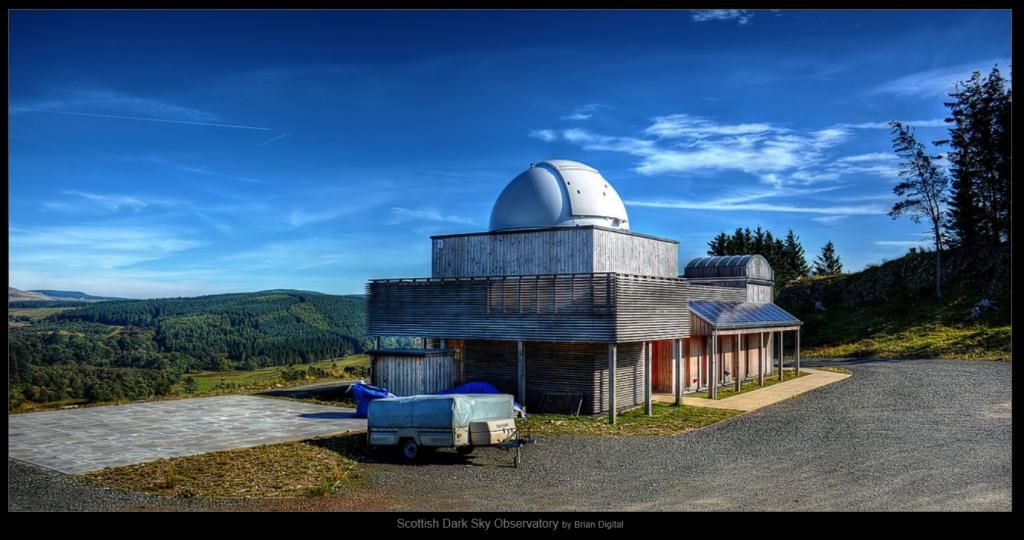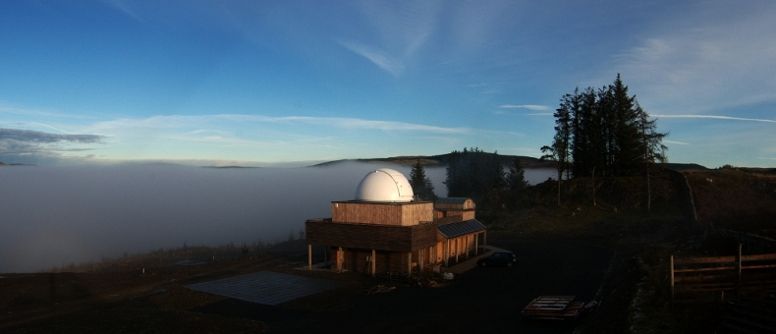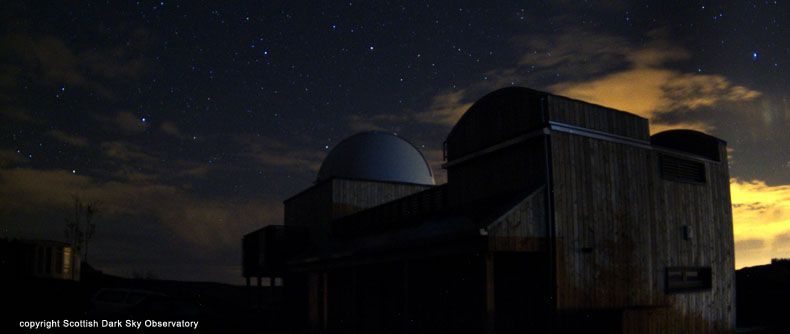You are using an out of date browser. It may not display this or other websites correctly.
You should upgrade or use an alternative browser.
You should upgrade or use an alternative browser.
*** The Official Astronomy & Universe Thread ***
- Thread starter PermaBanned
- Start date
More options
Thread starter's postsI'm sure you get people like me all the time in here...
Always been interested in space and stars. I'm also a photographer so just wonder what kind of expense is required to get some decent astronomy photos? (Excluding camera cost)
Edit : I have a Canon 5DIII , but I'm thinking scope + tracking equipment etc etc
Always been interested in space and stars. I'm also a photographer so just wonder what kind of expense is required to get some decent astronomy photos? (Excluding camera cost)
Edit : I have a Canon 5DIII , but I'm thinking scope + tracking equipment etc etc
Last edited:
What lenses do you have? as I'd forget about a scope to begin with and just use normal lenses and do you want portability or goto ability or not?
Expense depends on the above, but if you don't need goto and you can do without a scope then a pure tracker for dslr use is cheapish.
The new skywatcher star adventurer is a good bit of kit for £280ish although if you can afford it the astrotrac is a damn fine tracker at £500-600.
add to those a small battery pack for portability and some small dew heater bands and your nearly set.
What ever setup you went with unless you have perfect skies you would want a lp filter which for full frame canon the Astronomik CLS eos XL is no doubt what everyone will recommend although that's not cheap at around £140, this fits inside the camera so works regardless of what you mount it on.
If however you want a scope then things will get really expensive really quickly as you'd want a big EQ mount to take the weight, a fast scope for imaging, if you went with a newt you'd want image correctors and then there is the collimation cafluffle, you'd also want a guide scope and camera for accurate tracking, dew heaters, Big battery pack if you wanted to image away from mains, lots of time and patience etc.
have a search on http://www.astrobin.com/ with what ever lenses you have to see what results others are getting from that gear and what they have it mounted on.
Expense depends on the above, but if you don't need goto and you can do without a scope then a pure tracker for dslr use is cheapish.
The new skywatcher star adventurer is a good bit of kit for £280ish although if you can afford it the astrotrac is a damn fine tracker at £500-600.
add to those a small battery pack for portability and some small dew heater bands and your nearly set.
What ever setup you went with unless you have perfect skies you would want a lp filter which for full frame canon the Astronomik CLS eos XL is no doubt what everyone will recommend although that's not cheap at around £140, this fits inside the camera so works regardless of what you mount it on.
If however you want a scope then things will get really expensive really quickly as you'd want a big EQ mount to take the weight, a fast scope for imaging, if you went with a newt you'd want image correctors and then there is the collimation cafluffle, you'd also want a guide scope and camera for accurate tracking, dew heaters, Big battery pack if you wanted to image away from mains, lots of time and patience etc.
have a search on http://www.astrobin.com/ with what ever lenses you have to see what results others are getting from that gear and what they have it mounted on.
Thanks for that, a lot of it is over my head at this point but has give me plenty to research.
Current lenses :
Canon 24-70mm f2.8
Canon 70-200mm f2.8
Sigma 35mm f1.4
Canon EF 28-300mm f/3.5-5.6L
Will be purchasing a Nikon D750 + primes lenses very soon (24mm/35mm/85mm/135mm) if that's any better?
In the meantime I'll try to look into everything you mentioned so I can be more clear about what I want
EDIT : Ok spent the last hour or so researching.
I have some further questions, try not to laugh!
Stacking
Why are 30 x 10sec identical exposures better than a single 10sec exposure, surely they produce the same image? How does stacking identical images make objects brighter/clearer/show deep sky objects?
If the tracker ( Skywatcher star adventurer is more my budget for now) allows longer exposures - i.e over 30 secs - is it not beneficial to shoot for longer periods of time at f1.4 @ 100 ISO?
Deep Sky Objects
Now this is the kind of thing I'm talking about! Getting images like these would make me get out into the countryside and sit in the dark for a couple of hours! By the looks of Astrobin, its possible with a DSLR and a lens <300mm. I've read a few guides about the post processing, deepskystacker, photoshop etc, but would my 5DIII + 24-70/70-200, tripod, lp filter & Skywatcher tracker be everything I needed to start?
Adding a scope
What advantages are there by adding a scope for photography purposes? I've read you can just buy attachments to add the camer to the bottom of scope. However, from some of the images I've seen on astrobin - http://www.astrobin.com/32154/ & http://www.astrobin.com/23830/, how much would a scope improve these images? Is it just a case of getting a lot closer and therefore more detail? Are those images heavily cropped?
Sorry for my lack of understanding, particularly with the stacking part, but I just can't seem to get my head around the benefits.
Current lenses :
Canon 24-70mm f2.8
Canon 70-200mm f2.8
Sigma 35mm f1.4
Canon EF 28-300mm f/3.5-5.6L
Will be purchasing a Nikon D750 + primes lenses very soon (24mm/35mm/85mm/135mm) if that's any better?
In the meantime I'll try to look into everything you mentioned so I can be more clear about what I want

EDIT : Ok spent the last hour or so researching.
I have some further questions, try not to laugh!
Stacking
Why are 30 x 10sec identical exposures better than a single 10sec exposure, surely they produce the same image? How does stacking identical images make objects brighter/clearer/show deep sky objects?
If the tracker ( Skywatcher star adventurer is more my budget for now) allows longer exposures - i.e over 30 secs - is it not beneficial to shoot for longer periods of time at f1.4 @ 100 ISO?
Deep Sky Objects
Now this is the kind of thing I'm talking about! Getting images like these would make me get out into the countryside and sit in the dark for a couple of hours! By the looks of Astrobin, its possible with a DSLR and a lens <300mm. I've read a few guides about the post processing, deepskystacker, photoshop etc, but would my 5DIII + 24-70/70-200, tripod, lp filter & Skywatcher tracker be everything I needed to start?
Adding a scope
What advantages are there by adding a scope for photography purposes? I've read you can just buy attachments to add the camer to the bottom of scope. However, from some of the images I've seen on astrobin - http://www.astrobin.com/32154/ & http://www.astrobin.com/23830/, how much would a scope improve these images? Is it just a case of getting a lot closer and therefore more detail? Are those images heavily cropped?
Sorry for my lack of understanding, particularly with the stacking part, but I just can't seem to get my head around the benefits.
Last edited:
I'm sure you get people like me all the time in here...
Always been interested in space and stars. I'm also a photographer so just wonder what kind of expense is required to get some decent astronomy photos? (Excluding camera cost)
Edit : I have a Canon 5DIII , but I'm thinking scope + tracking equipment etc etc
Start here - http://stargazerslounge.com/
I guess this will show up the fact that I'm also a complete novice, but the mount on the Dobsonian - the swivel of the base I guess is in the plane of the surface of the ground and then you have the up/down tilt of the scope, is that easier to track things with than an EQ mount? (which as I understand it allows the scope to rotate in a few directions which you align with the spin of the planet or similar..)
Dobsonians are extremely portable as they can be removed from the base quite easily and when in storage, the tube can be pointed vertically so the footprint is really really small.
I have an EQ6 Pro and a 12" Newtonian permanently mounted in my kitchen and it takes up a huge amount of space. Sometimes wish I got a dob instead but I like the tracking and go to mount.
With dobsonians they use alt azimuth so you just sorta nudge the scope a little when the object starts to go out of the field of view, very easy to use.
EQ mounts can take a while to setup to get good polar alignment before you begin to track.
Absolute best buy for you would be a Skywatcher 150 and Turn left at Orion.
Also, keep an eye out on this website.
http://astrobuysell.com/uk/index.php
Some really good deals on second hand scopes.
This for example.. http://astrobuysell.com/uk/propview.php?view=90154
http://astrobuysell.com/uk/index.php
Some really good deals on second hand scopes.
This for example.. http://astrobuysell.com/uk/propview.php?view=90154
On to Mars:
Becquerel crater is 167 km in diameter and lies in the Arabia Terra region on Mars, on the boundary between the southern highlands and northern lowlands. This movie shows the location of Becquerel crater on Mars and then provides a flyover of a mound of layered, sulphate-bearing deposits on the crater floor, thought to have formed under the influence of water. The darker material surrounding the mound is wind-blown dust from a source to the north, and provides evidence for effects of wind in eroding the sedimentary deposits.
The movie was made from a mosaic of four individual images acquired by the High Resolution Stereo Camera on ESA’s Mars Express during orbits 3253/1, 5332, 5350 and 5368. The image is centred at about 22ºN / 352ºE. The average ground resolution is about 17 m per pixel.
Soldato
- Joined
- 14 Mar 2011
- Posts
- 5,441
Absolute best buy for you would be a Skywatcher 150 and Turn left at Orion.
Thanks again for the advice (and to everyone else who commented as well
 ) The Skywatcher + Turn Left is exactly what I went with
) The Skywatcher + Turn Left is exactly what I went withStacking
Why are 30 x 10sec identical exposures better than a single 10sec exposure, surely they produce the same image? How does stacking identical images make objects brighter/clearer/show deep sky objects?
A couple of reasons:
* dynamic range - the astro objects have a larger dynamic range than daytime so sometimes it's even need to take a set of 3, 10, 30, .., 1800 second images.. then pull them together as HDR in processing. Often a picture is taken to purposely target the faint detail, so saturation occurs in the stronger parts - post processing (this is another art entirely from daylight processing) then is used to mask out the saturated with HDR or layers.
* the main reason is the image signal - i.e. what you're taking a photo of is very dim, so the signal (the object light) is in danger of being drowned out by the noise from the camera etc. So taking multiple images (including 'darks' and 'flats' as well) allows the signal to be identified and the noise to be removed/reduced.
If the tracker ( Skywatcher star adventurer is more my budget for now) allows longer exposures - i.e over 30 secs - is it not beneficial to shoot for longer periods of time at f1.4 @ 100 ISO?
Daytime cameras are pre-amp hot hence they run the sensor signal preamplifier all the time for fast daylight shooting. So for night time this becomes a bit of a balancing act for a DSLR. (the amp causes amp glow noise in the picture)
You can shoot as long as you want within limits of the tracking and the well depth of the sensor (see the point about dynamic range).
I've taken 20 minute subs before - a 'fast' lens (i.e. low f-number) will do well it will be wide angle so you're limited to large objects like nebula and the milky way for smaller lenses.
A 300mm lens is a good point and Cannon lenses are great for astro work (also Cannon cameras can be control better than other makes via a software package called APT, or others).
Deep Sky Objects
Now this is the kind of thing I'm talking about! Getting images like these would make me get out into the countryside and sit in the dark for a couple of hours! By the looks of Astrobin, its possible with a DSLR and a lens <300mm. I've read a few guides about the post processing, deepskystacker, photoshop etc, but would my 5DIII + 24-70/70-200, tripod, lp filter & Skywatcher tracker be everything I needed to start?
You can start with a simple tripod and a timer release for the shutter. In fact I would recommend this before going out and getting lots of kit. A couple of nights of experience will give you a starting point.
Have a large storage card for the image and a battery pack as the camera battery may have issues in the cold (Li-ion for laptops have issues for example).
Adding a scope
What advantages are there by adding a scope for photography purposes? I've read you can just buy attachments to add the camer to the bottom of scope. However, from some of the images I've seen on astrobin - http://www.astrobin.com/32154/ & http://www.astrobin.com/23830/, how much would a scope improve these images? Is it just a case of getting a lot closer and therefore more detail? Are those images heavily cropped?
Now you're not going to like me

Camera lenses have aberration that results in a non-flat field when wide open. Also the spot size off axis tends to be more noticeable in astro/night shots. Flats help correct any vignetting but not the spot size..
This is my 670mm f6.38 being used visually:

Sorry for my lack of understanding, particularly with the stacking part, but I just can't seem to get my head around the benefits.
Here's a night shot using a Cannon D650 with the standard EF 18-50mm lenses.. using stacking - look at the noise level.
[url=https://flic.kr/p/fCwF9b]
 Plaza at night
Plaza at nightAn another using multiple duration exposures with HDR using my 670mm and 383L camera:
 HDR
HDRAn this is a lunar shot, again using the 670mm:
 SGL8-moon-stacked-sharpened-stretched
SGL8-moon-stacked-sharpened-stretched The above shot is saturated because the 383L camera can't take shots under about 3 seconds..
Associate
- Joined
- 23 Dec 2006
- Posts
- 1,061
- Location
- Wakefield, West Yorkshire, UK, Earth!
Would this be the right place to ask about a low budget telescope 
I've been thinking of purchasing a second hand one as there will be a flood of them soon after Christmas but with only a small budget set aside of around £100 I wasn't sure if it would be any good. I have no idea what to even look for to be honest!
but with only a small budget set aside of around £100 I wasn't sure if it would be any good. I have no idea what to even look for to be honest!

I've been thinking of purchasing a second hand one as there will be a flood of them soon after Christmas
 but with only a small budget set aside of around £100 I wasn't sure if it would be any good. I have no idea what to even look for to be honest!
but with only a small budget set aside of around £100 I wasn't sure if it would be any good. I have no idea what to even look for to be honest!



